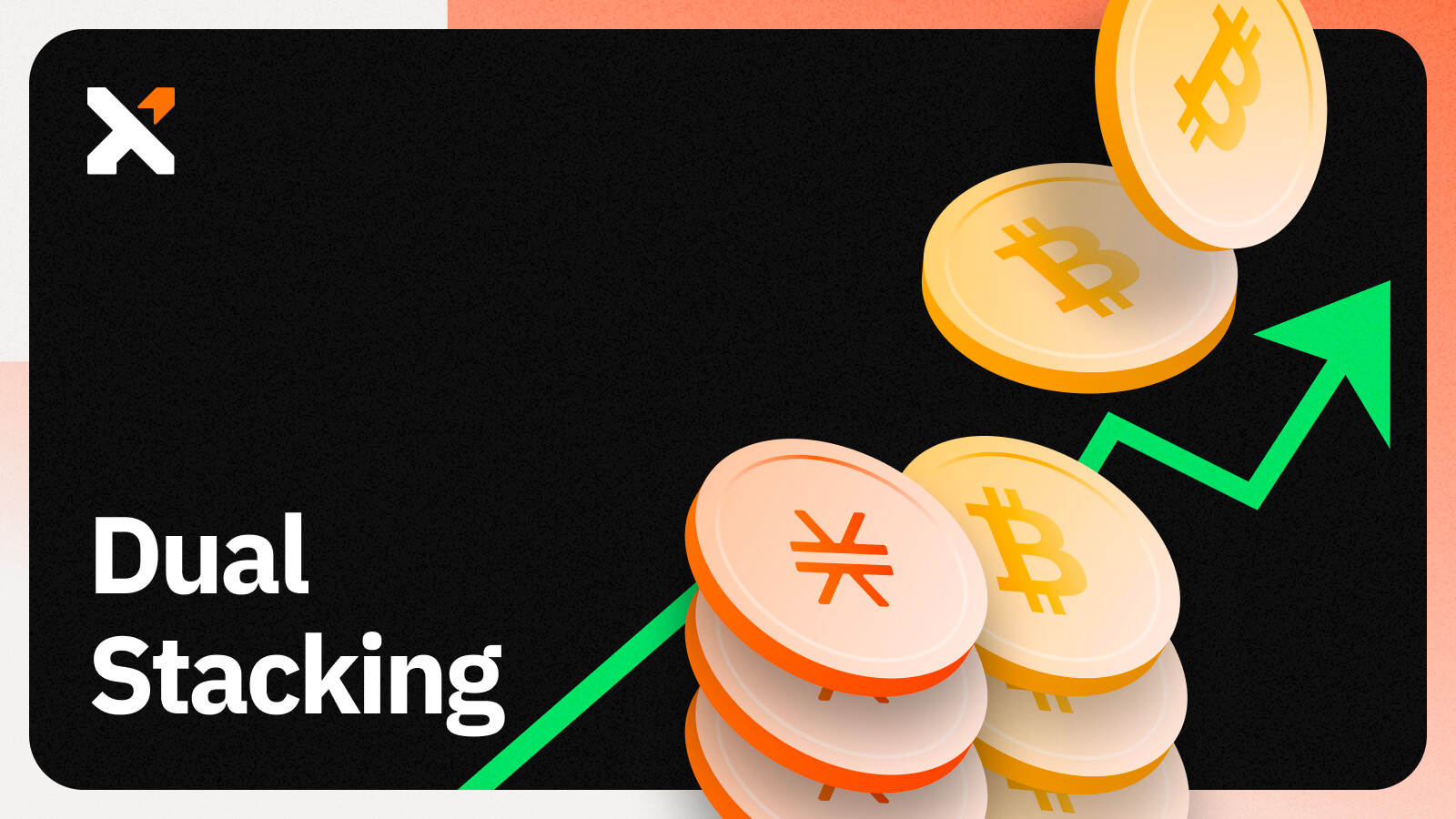What Is Liquid STX Stacking? A Beginner’s Guide
Learn what liquid Stacks (STX) stacking is and how it works in this beginner’s guide to liquid stacking.

Sign up for updates!
Stay tuned to our latest news and updates
.svg)
Bitcoin has demonstrated its reliability as a store of value, prompting investors to accumulate as much as possible. Layer 2s like Stacks have set out to make Bitcoin more programmable, birthing the Bitcoin Web3 movement.
In this guide, you will learn about liquid STX stacking, an activity that can help investors grow their BTC holdings by leveraging Stacks.
What Is Stacking STX?
Stacking STX is the act of locking STX tokens for about two weeks to participate in the consensus of the Stacks network. In return for helping secure the protocol, stackers earn rewards generated from the BTC that Stacks miners commit to secure the chain.
Although stacking is similar to staking because it involves temporarily locking tokens, the two processes are different. In staking, stakers earn rewards in the same token that was locked. When it comes to stacking, STX tokens are locked to earn BTC.
The other difference between the two activities is that stakers are involved in transaction validation, while stackers are not. The role of stackers is to provide economic security to the Stacks network. Once the Nakamoto upgrade is implemented before the Bitcoin halving event in April 2024, stackers will have the added role of acting as signers for sBTC, a two-way peg token on Stacks that will allow users to bridge BTC to and from the base layer.
STX is the native token of Stacks, a Layer 2 network built on top of Bitcoin. The protocol uses the Proof-of-Transfer (PoX) consensus mechanism, which has two participants: stackers and miners.
PoX uses BTC to secure the Stacks network. This BTC is committed by Stacks miners, whose role it is to mine blocks in exchange for STX rewards. The committed BTC is then transferred as a reward to stackers.
Anyone can participate in stacking on their own, on a crypto exchange, through a pool, or through a liquid stacking protocol.
What Is Liquid STX Stacking?
Liquid STX stacking involves locking STX tokens on a liquid stacking protocol like StackingDAO to earn bitcoin. However, unlike other types of stacking, stackers also receive a liquid token called Stacked STX (stSTX), which represents the amount of STX locked. Liquid STX stacking has only become possible recently since Stacks smart contracts could not carry out continuous stacking before April 2023.
Liquid stacking is beneficial because stackers can stack any amount of STX tokens without running a node, as the stacking protocol does it on their behalf. Other forms of stacking require a minimum amount of STX from investors. For instance, the minimum amount to stack in the Xverse pool is 500 STX, while solo stacking demands a minimum of 100,000 STX.
Besides the lack of a minimum stacking amount, liquid stacking auto compounds the yields locked STX tokens generate. As a result, the value of stSTX tokens grows over time, producing capital gains that are lightly taxed compared to crypto yields that are considered income.
How Does Liquid STX Stacking Work?

Liquid STX stacking involves depositing STX tokens in a smart contract on a protocol like StackingDAO and getting stSTX tokens in return.
The STX tokens remain locked throughout the PoX cycle, which is about two weeks. Stackers can initialize a withdrawal more than a day before a cycle ends. Once a withdrawal is initialized, stackers receive an NFT representing the withdrawal amount. The NFT is used to claim STX tokens. When the locked STX tokens are withdrawn (unstacked), the stacking protocol burns the respective stSTX tokens.
StackingDAO is a liquid stacking protocol built on the Stacks network. It received a grant from the Stacks Foundation in July 2023 and launched in December 2023.
The Role of stSTX in Liquid Stacking
stSTX is a liquid token representing a user’s stacked STX tokens. The ratio between these tokens is about 1:1. It allows stackers to remain liquid during the period their tokens are locked. That means they can use their stSTX tokens to carry out other DeFi activities like trading or borrowing.
StackingDAO has integrated DeFi protocols like Bitflow and Zest to give stackers avenues where they can use their stSTX tokens. On the Bitflow AMM, stackers can swap their stSTX tokens for STX, while Zest enables stackers to borrow aeUSDC against their stSTX tokens.
StackingDAO converts the BTC rewards earned from stacking to STX and then deposits them in the smart contract that backs stSTX. Therefore, the value of stSTX rises as your locked STX produces yields.
The StackingDAO protocol also rewards 1 point for every stSTX token held per day. Stackers stop earning points once they have initialized a withdrawal and the stSTX has left their wallet. The protocol takes a 5% commission fee from the stacking yield earned through locked STX tokens.
Liquid Stacking on StackingDAO With Xverse: Here’s How It Works
You can participate in liquid stacking on StackingDAO with your Xverse Stacks wallet by following these steps:
- Download, install, and set up the Xverse wallet on your phone or Google Chrome browser if you haven’t already. We will use the Xverse Chrome extension wallet in this example.
- Fund the wallet with your preferred amount of STX tokens.
- Next, visit the StackingDAO website.

- Connect your Xverse wallet to StackingDAO.
- Click “Start Stacking.”

- Type the amount you wish to stack and click “Stack.”

- The protocol will display the conversion rate and the amount of stSTX you will receive.

- Confirm the deposit request and wait for stSTX tokens to hit your wallet. It will take about 10 to 30 minutes for the Stacks network to confirm this transaction. Keep in mind that this transaction will cost you network fees.

- Once you have received stSTX tokens, you can use them on Bitflow or Zest Protocol. The value of the stSTX tokens will increase as your locked STX tokens earn yields.
And that’s it! That’s how you engage in liquid stacking using your Xverse Stacks wallet.
Xverse: Your Gateway to the Stacks Ecosystem

Xverse is the leading Bitcoin Web3 wallet to interact with the Stacks ecosystem, enabling you to engage with DeFi protocols like StackingDAO.
Moreover, you can use the Xverse to store and manage STX tokens, stSTX, and other fungible and non-fungible tokens created on the Stacks network.
What’s more, Xverse also allows you to buy STX tokens directly from the app or the Chrome extension wallet. In addition to STX and Stacks assets, Xverse also supports BTC, BRC-20 tokens, Runes, and Ordinals.
Download Xverse today to start using it within the Stacks ecosystem.
FAQs
What Is stSTX?
stSTX is a tokenized representation of stacked STX tokens. It is distributed to stackers after they lock their STX tokens on a liquid stacking protocol like StackingDAO. stSTX is allocated to stackers on a ratio that is almost 1:1. The token allows stackers to remain liquid while their STX tokens are inaccessible. That means they can use stSTX to borrow funds or trade.
What is the minimum STX for stacking?
The minimum STX for stacking will depend on the type of stacking you are carrying out. For example, if you are stacking on your own, the minimum STX required is 100,000 STX. On the other hand, stacking on a stacking pool like Xverse demands a minimum of 500 STX.
Liquid stacking does not have a minimum STX requirement. However, the deposit transaction that locks STX tokens in a smart contract is subject to network fees. That means you should have extra tokens to pay for this transaction.
How do you earn BTC with STX?
You can earn BTC with STX through stacking. This process involves temporarily locking STX tokens for about two weeks in exchange for BTC rewards. The Stacks Layer 2 network rewards stackers because they contribute to the security of the protocol. You can stack STX tokens on your own or in a pool like Xverse. The Xverse pool does not charge a fee for stacking.
What are the rewards for stacking STX?
Stacks rewards STX stacking in BTC, generated from the funds Stacks miners commit to mine blocks. These rewards are given because stacking contributes to the security of the Stacks Layer 2 protocol. Stacking encompasses locking STX tokens for approximately two weeks, which is the length of the Proof-of-Transfer (PoX) cycle. PoX is a consensus mechanism that secures the Stacks network using BTC.
How much can I earn from stacking STX?
Earnings from stacking vary from platform to platform. For instance, StackingDAO offers an APY of about 6.35% and auto compounds yields earned. However, the protocol takes a 5% commission from yields earned. On the other hand, the Xverse Pool does not charge any fees, and the APY is around 6%.
Share this article



.svg)




